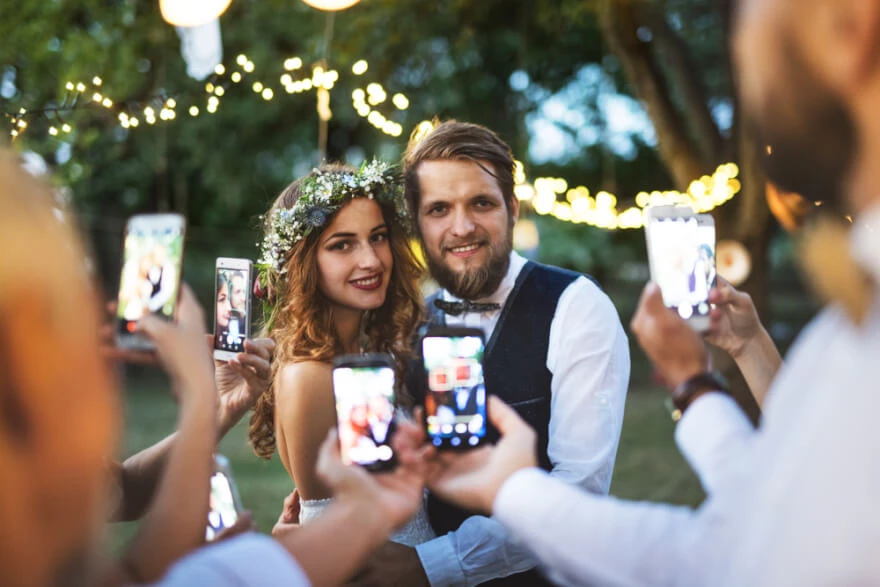How to take good photos with phone

- Why not start with a tripod?
- Ask more than default settings!
- ISO adjusting
- Play with the white balance
- Frame resolution is traditionally taken into account
- Camera FV-5 and similar applications
- External lens
Did you know that digital cameras are not in fashion anymore? Almost none remembers why it exists, because our smartphones have become the perfect device for everything. Over the past several years, cameras built into mobile phones have come really close to characteristics of digital cameras, even sometimes more functional. Number of filters, modes and apps permitted to use it 24 hours a day and 7 days a week. This way every beautiful moment is securely captured and memorized in the media. But if we want to go further we should think of how to improve the way we make pictures. This article is going to demonstrate some tips on how to take a professional photo with your phone.

Teach your phone to be a professional photo-device
Of course, a good real camera is a wide lens, image depths, full-sized photo sensor, and everything else. The only disadvantage is that it is not a smartphone! And jokes apart it is really a huge disadvantage: because phones can immediately process snapshots, share them, respond to comments and check others — and digital cam can only take a photo.
Why not start with a tripod?

Get the best option available in the market
If you were engaged in photo shooting in any serious way, then of course you know that a tripod is essential for a quality result. A reliable fixation of the cam helps a lot when you need to make an excellent complex shot. This way you easily avoid different problems like trembling hands with long exposures. Honestly speaking, not all phones can permit connection to a full-fledged tripod. But there is a comfortable option of a car phone holder with a flexible leg.
However, it will be always better to purchase a specialized tripod online, for example. It is especially good, when equipped with flexible legs. Such feature allows you to control the tilt playfully, and still get up tricks that are difficult to do with others, like mounting horizontally, clinging to vertical objects.
Ask more than default settings!

Study all settings in your phone to be ready to choose the right mode immediately
Most users never look in settings, and yes, we often do not even realize that they exist! Meanwhile, if you dig a little, you will find things familiar to anyone who worked with professional equipment:
- sensitivity in ISO units,
- focus settings, shutter speeds,
- various white balance modes,
- frame resolution.
The idea is that automatic shooting mode can be good, but smartly managing settings manually, you almost certainly can get the best result, especially talking about amazing portraits.Sometimes, if settings are hidden, you should check the ‘Pro’ mode. Now you are the one to choose the way you want to get the image done. Keep in mind that there are much more options to change. Everything you have to do is to examine attentively all snapshot features and modes.
ISO adjusting

General rules are unique for everyone
The higher is the ISO, the more sensitive your camera to light sources, the less exposure is required. However, remember that due to peculiarities of photosensors operation, the amount of noise increases with increase of ISO. Therefore, especially if you have a tripod, it may be more appropriate to be satisfied with a lower ISO, but with a longer exposure: this will make your picture much cleaner. Do not lose an opportunity to improve the image, using such a simple tip and minimize the stress from post-processing.
Play with the white balance

Get it more vivid and attractive for a viewer
In simple words, you should set the mode corresponding to shooting conditions: when working outdoors, put ‘daylight’ and ‘cloudy’, and indoors ‘lamp light’ and ‘fluorescent’. This way you can get juicy shades. Get your pictures better with the help of such a small, but important tip and get a satisfying result. White balancing can be underestimated, but working with iPhone or Android cam every detail is significant. You never know which option can become crucial.
Frame resolution is traditionally taken into account

Resolution of a frame should be maximum and coincide with number of pixels on a photosensor
This will provide the most accurate picture, and the least blurred. It will be possible to continue processing — imitating ‘zoom’ (phone cameras know how to make a real ‘zoom’, but only a little). Remember that your smartphone is not a ‘telephone plus camera’, but a ‘small computer plus camera’. So, you can not only manage the shooting process, but also immediately get it processed. You may get surprised by all the possibilities your device can offer.
Camera FV-5 and similar applications

Find out new applications and programs in your online store
Interface is as close as possible to professional tools: all the most important parameters are visible and can be changed quickly. However, the fundamental difference is that there are almost no automatic shooting modes. Everything is set by the user manually, or adjusted according to user-defined scenarios.
Unfortunately, not all the possibilities of cameras can be realized by smartphones, sometimes you have to look for tricks. For example, in order to work with a very long exposure (dozens of seconds), the FV-5 accumulates frames made constantly, but with a resolution less than the maximum possible. But there is an opportunity to do something that a normal cam is incapable of: bracketing function — fast shooting of several frames with different exposures, which allows you to compose an HDR-picture. There is also a low-noise ultra-low sensitivity mode (ISO 50): still, it does not work with every smartphone. And this rule can be applied to many ‘extreme’ and unusual functions: not every smartphone camera has necessary features.
External lens

Getting smaller do not forget a big lens
No matter how good you are with software, settings and tripod, the main drawback of each smartphone is still there: a flat camera with a narrow lens. And you can fix it only in one way: by purchasing an awesome external lens and it should be the best one by characteristics. This lens is attached to a smartphone immediately before shooting (usually with a special clip), because carrying it altogether is always difficult. But it radically changes parameters and capabilities of standard optical systems. You can take a lens that gets more light — and shoot in dark. You can take a bulging one and turn the camera into a fisheye or macro photography.
Summing up, you will never guess which camera can give you more satisfaction from the process. But, for sure, your iPhone or Android is worth trying and with the help of our few tips you can become one of those professional photographers.
He started his career as a professional photo designer and retoucher. Professional commercial photographer with 20 years of experience. He is a leading advertising photographer and has worked as a food photographer with Michelin-starred chefs. His work with models can be seen on the calendars of many leading companies in Ukraine. He was the owner of the photo studio and photo school "Happy Duck".

with RetouchMe














